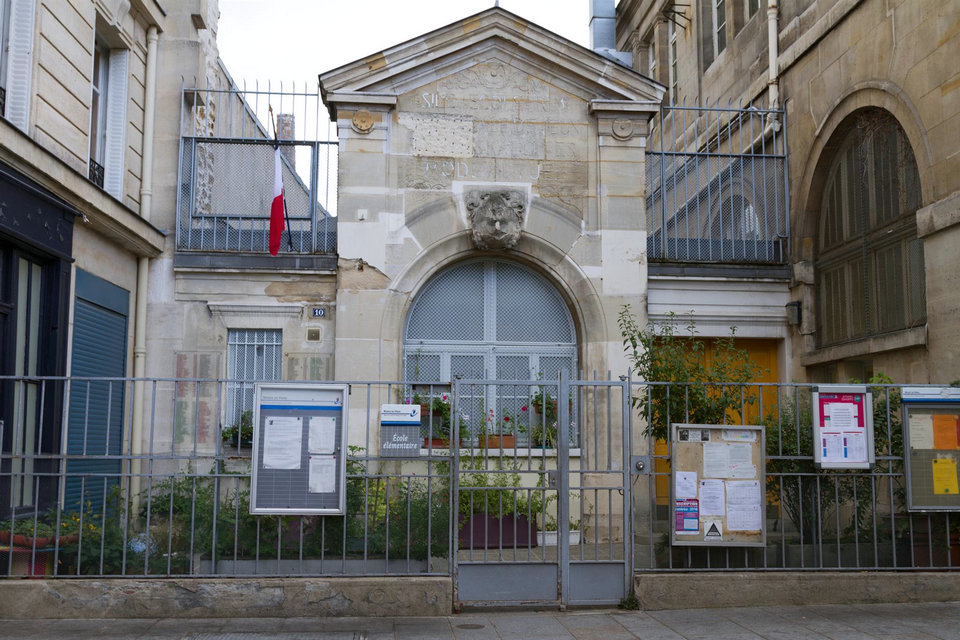

A story of destruction and humanity
Liberté, égalité, fraternité (iberty, equality, fraternity) – the values perpetuated by the French revolution – attracted many immigrants – many of them Jews – to come to France in order to ensure a better future for their children. Many immigrants settled in the Marais quarter in Paris, which came to be known as the “Pletzl”
The Hospitalieres St. Gervais School. During the inter-war period, the majority of the students at the “École Hospitalières-Saint-Gervais” (situated in a street by the same name in the Marais) were Jewish. Although it was a public school, it was closed on Saturdays – the Jewish day of rest.
Joseph Migneret had been teaching in the school since 1920, and was appointed as principal in 1937.
For the immigrant students, many of whom spoke Yiddish at home, the school became the gateway to their integration in France.
“He taught us about solidarity and treated us with love and sensitivity… in our eyes, he represented France”, said a former student.
16-17 July, 1942 – the Vel d’Hiv round-up of the Jews of Paris.
In the early morning, French policemen began arresting Jews in their homes. 4,051 out of the total 13,152 Jews arrested were children. Families were confined under terrible conditions in the Velodrome d’Hiver. Consequently the children were separated from their parents. The parents were deported first; the children several weeks later.
The fate of the Children in the transit camp of Drancy, before their deportation to Auschwitz. From the testimony of Georges Wellers at the Eichmann trial in Jerusalem, 9 May 1961
The Vel d’Hiv brought Jewish life in the Marais to an abrupt end. Many were arrested, deported to Auschwitz, and murdered; others fled and went into hiding.
In September 1942, when the school year opened, Joseph Migneret found that the population of the school was practically wiped out. He decided that his responsibility now was not to give his students French and Math lessons, but rather to try and save their lives.
“Time passed, but the memories are present… When I enter my building, I realize that entire families were destroyed, my school friends….Entire families were annihilated. ” (Milo Adoner)
“In October 1942 my mother wanted to move to the unoccupied zone, with my young sister and myself, in order to evade the risk of renewed roundups in our neighborhood of the 4th quarter [of Paris]. We had been lucky not to be on the lists of the previous roundups.
The director of our school in Hospitalières-Saint-Gervais, Monsieur Joseph Migneret, had already provided some of my friends with false papers of non-Jewish Frenchmen. I therefore went to him. He provided us with documents that enabled us to make the trip across the demarcation line without trouble.”
– Adolphe Kornman, a former student
On 28 March 1990, Yad Vashem recognized Joseph Migneret as Righteous Among the Nations.
A tree was planted in his honor on the Mount of Remembrance by his former students.
His medal and Certificate of Honor are displayed in the entrance hall of the École Hospitalières-Saint-Gervais.
To commemorate the murdered children and the school’s principal who tried to rescue them, the former students of the school placed two plaques on the school wall. Every year the survivors gather in front of the school, read the names of the students who were deported and killed, and then march through the streets of the Marais.
The Hospitalieres St. Gervais students hold an annual memorial ceremony in memory of their school’s former students and of the former principal who tried to save them.
The Malamout Family lived in rue des Rosieres in the Marais. The children went to the Hospitalieres Saint Gervais school around the corner. In 1942, the parents were deported, and a few weeks later, in September 1942, Micheline (aged 17), Salomon (aged 15), Georges (aged 12), Lucien (aged 3) and Helene (six months old) were sent to Auschwitz.
260 Jewish boys and girls who went to the Hospitalieres St. Gervais School were murdered in the Holocaust.
The reading of the names of the murdered children by the school’s students in 1999.
“When I came back from the camps and told him my brother was not coming back, [Migneret] broke down in tears. I think our principal died because of having lost all his students…On October 2, 1942 there were 4 students when the school year began. Monsieur Migneret cloesed the school.” (Milo Adoner)